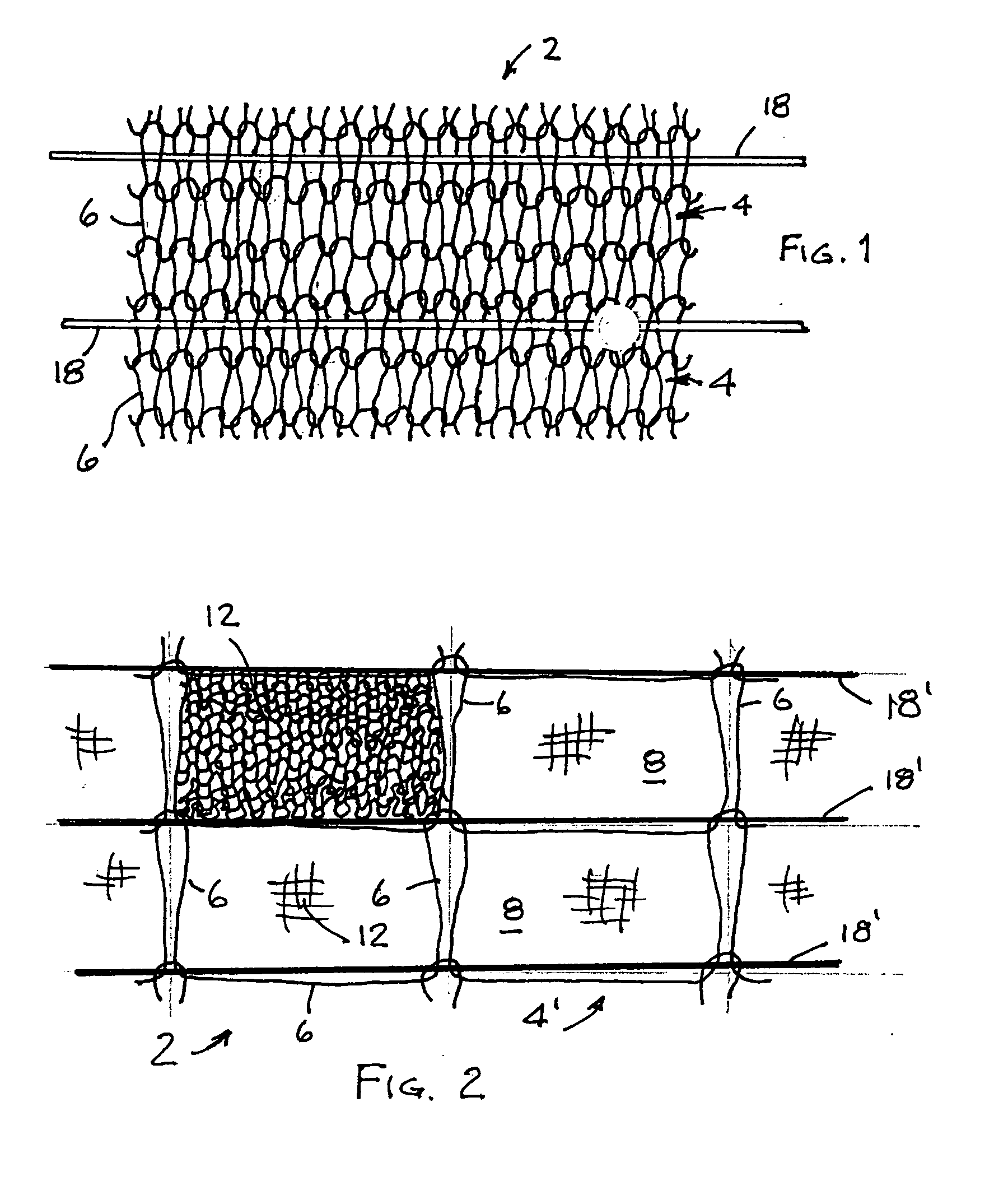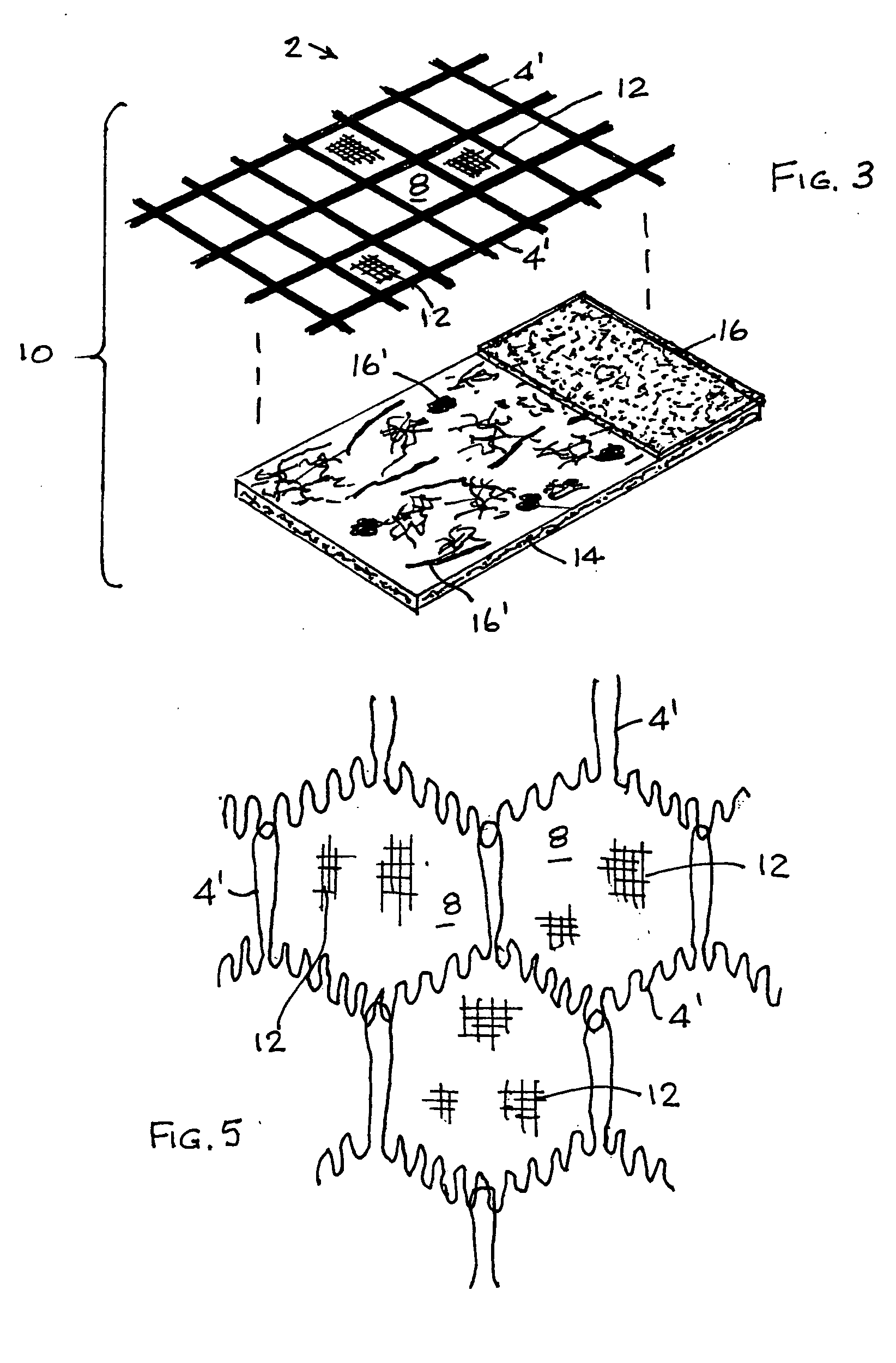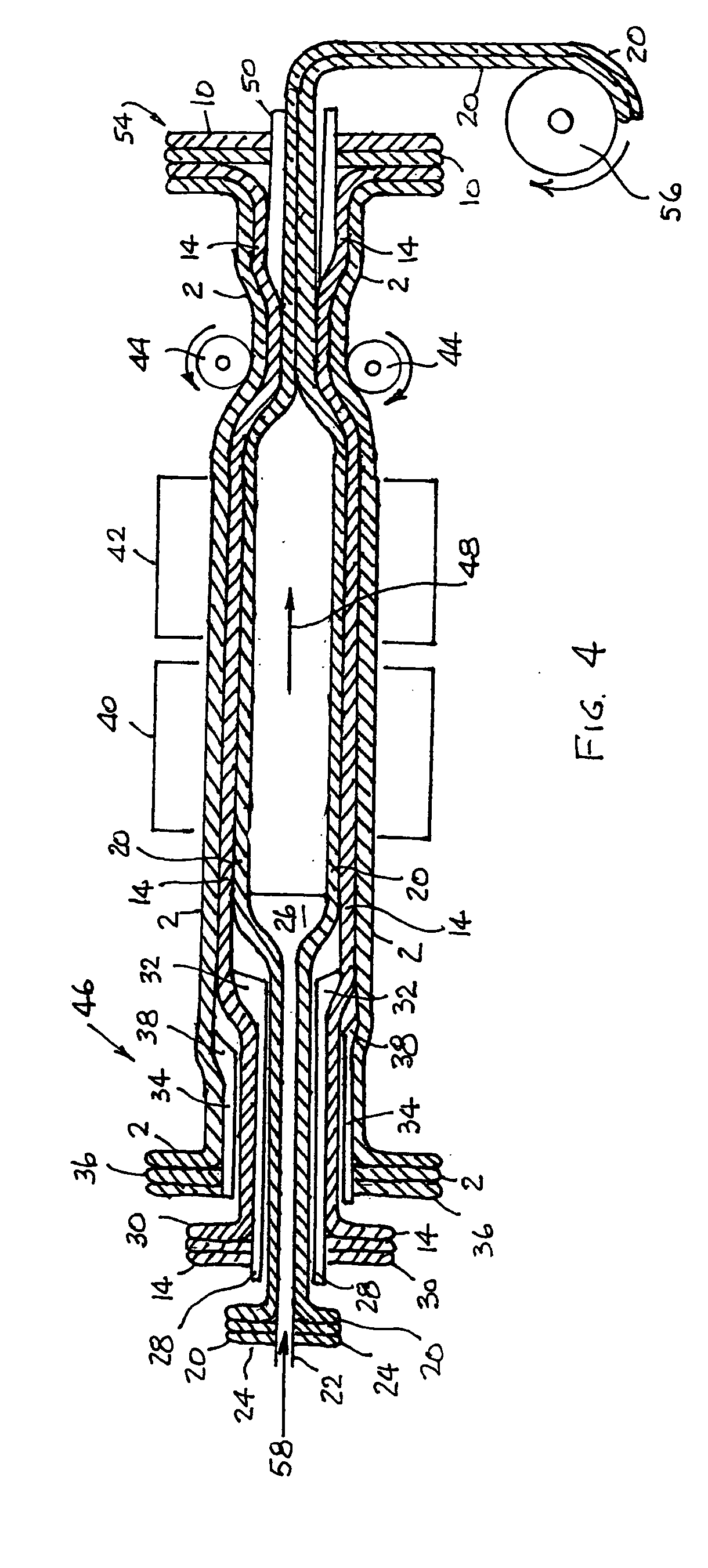Laminated casing having multiple porosities
a casing and porosity technology, applied in cocoa, butchering, thin material processing, etc., can solve the problems of insufficient wet strength of lamina to be self-supporting, and it has not been possible to obtain all of these capabilities in a single casing product, so as to achieve the desired degree of dryness, high porosity netting, and low porosity casing
- Summary
- Abstract
- Description
- Claims
- Application Information
AI Technical Summary
Benefits of technology
Problems solved by technology
Method used
Image
Examples
Embodiment Construction
[0024] The invention described and claimed herein overcomes the deficiencies of the prior art casings and nettings by synergistically combining the desirable properties of two different materials into a single laminated device. In its broadest form, the invention is defined as a casing / netting device in which a first lamina of good strength and shape-forming capability is laminated to a second lamina of a controlled porosity material which has wet strength but is not self-supporting. The first lamina's strength is sufficient to maintain a desired outer dimension and to define and maintain the shape of the food product. The second lamina's controlled porosity is such that non-solids (vapor and also usually liquid) can pass through it to and from the cooking meat but solids within the meat are retained. This permits the meat to achieve a desired degree of dryness but still retain important solid components such as the meat proteins and much or all of the meat fats. The second lamina i...
PUM
 Login to View More
Login to View More Abstract
Description
Claims
Application Information
 Login to View More
Login to View More - Generate Ideas
- Intellectual Property
- Life Sciences
- Materials
- Tech Scout
- Unparalleled Data Quality
- Higher Quality Content
- 60% Fewer Hallucinations
Browse by: Latest US Patents, China's latest patents, Technical Efficacy Thesaurus, Application Domain, Technology Topic, Popular Technical Reports.
© 2025 PatSnap. All rights reserved.Legal|Privacy policy|Modern Slavery Act Transparency Statement|Sitemap|About US| Contact US: help@patsnap.com



